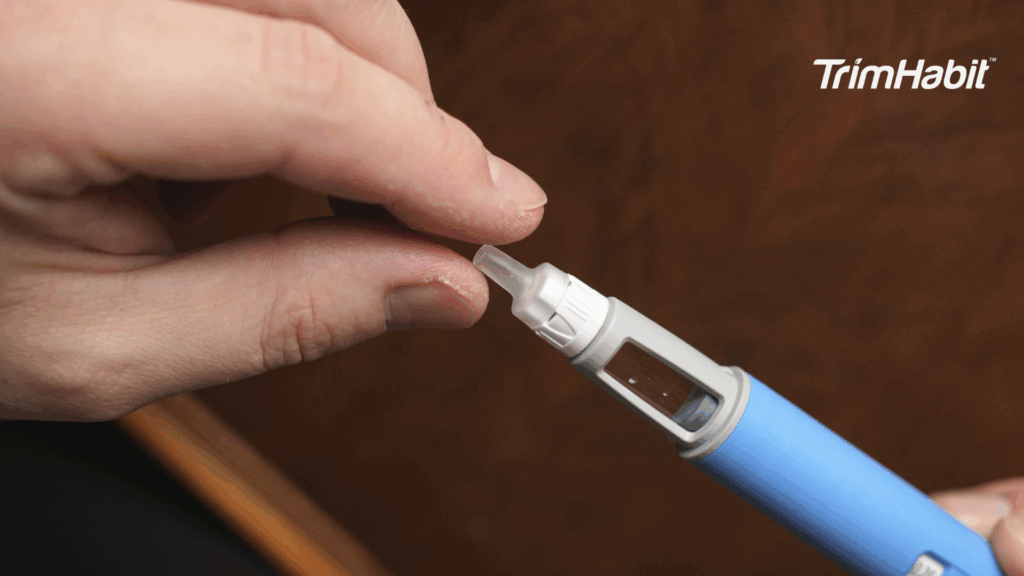Keeping blood sugar levels steady is important for preventing diabetes and other metabolic disorders. While traditional diets often focus on regular meals, intermittent fasting has become a strong alternative. Intermittent fasting is gaining attention for its potential to improve blood sugar control.
This article explores controlling blood sugar levels through intermittent fasting methods and offers practical tips for integrating these techniques into daily life for better health.
Understanding Blood Sugar Levels
What is Blood Sugar?
Blood sugar, or glucose, is the leading sugar in the blood and the primary energy source for the body’s cells. It comes from your food and is regulated by insulin, a hormone the pancreas produces1.
Why Do Blood Sugar Levels Matter?
Maintaining normal blood pressure and sugar levels is essential because:
- High blood sugar (hyperglycemia) can lead to complications such as heart disease, stroke, kidney disease, vision problems, and nerve damage2.
- Low blood sugar (hypoglycemia) can cause symptoms like shakiness, confusion, irritability, and, in severe cases, loss of consciousness or seizures3.
Factors Affecting Blood Sugar Levels
Several factors can influence blood sugar levels, including:
- Diet: Carbohydrate intake has the most significant impact on blood sugar levels4.
- Exercise: Physical activity helps lower blood sugar levels by increasing insulin sensitivity5.
- Stress: Hormones released during stress can raise blood sugar levels6.
- Medications: Certain medications can raise or lower blood sugar levels7.
- Alcohol: Can cause both increases and decreases in blood sugar levels7.
Monitoring Blood Sugar
For people with diabetes, regular monitoring is critical. To keep track of your levels, you can use:
- Self-Monitoring: Using a blood glucose meter to test blood sugar levels at home8.
- Continuous Glucose Monitoring (CGM): A device that measures blood sugar levels throughout the day and night9.
- HbA1c Test: A lab test that provides an average blood sugar level over the past 2-3 months10.
Understanding Intermittent Fasting
Intermittent fasting (IF) is an eating pattern that cycles between periods of fasting and eating. It’s less about specific foods and more about timing of your meals. This approach has gained popularity due to its potential benefits for weight loss, metabolic health, and longevity11.
How Intermittent Fasting Works
Intermittent fasting functions by extending the period after your last meal, during which your body has used up the calories consumed and transitions to burning fat for energy. Here are some of the fundamental mechanisms that occur during this process:
- Insulin Levels: Fasting lowers insulin levels, which facilitates fat burning12.
- Human Growth Hormone (HGH): Fasting can increase HGH levels, aiding in fat loss and muscle gain13.
- Cellular Repair: During fasting, cells initiate essential repair processes, such as removing old and dysfunctional proteins14.
- Gene Expression: Fasting can trigger beneficial gene changes related to longevity and protection against disease15.
Potential Benefits of Intermittent Fasting
Intermittent fasting may offer several health benefits including:
- Weight Loss: By reducing calorie intake and altering hormone levels, IF can lead to weight loss and loss of belly fat16.
- Improved Metabolic Health: IF can reduce insulin resistance, lower blood sugar levels, and improve metabolic markers17.
- Heart Health: IF may reduce risk factors for heart disease, such as LDL cholesterol, inflammatory markers, and blood triglycerides18.
- Brain Health: IF can increase the brain hormone BDNF and may aid the growth of new nerve cells. It also may protect against Alzheimer’s disease19.
Potential Risks and Considerations
While intermittent fasting has many potential benefits, it may not suit everyone. Possible risks and considerations include:
- Hunger and Cravings: These might be challenging to handle, particularly at the start20.
- Nutrient Deficiency: IF could lead to nutrient deficiencies if not done correctly21.
- Eating Disorders: IF is not recommended for individuals with a history of eating disorders22.
- Medical Conditions: People with certain medical conditions or medications should consult a healthcare professional before starting IF23.
Benefits Of Intermittent Fasting For Diabetes
Intermittent fasting can significantly impact blood sugar control through several mechanisms. These mechanisms help improve insulin sensitivity, reduce blood sugar levels, and promote metabolic health. Here’s a detailed overview of how intermittent fasting works to control blood sugar:
1. Improved Insulin Sensitivity
Insulin sensitivity refers to how effectively the body responds to insulin. Improved insulin sensitivity means cells can use blood glucose more effectively, reducing blood sugar levels. Intermittent fasting can improve insulin sensitivity through:
- Reduction in Insulin Levels: Fasting periods help lower insulin levels, which reduces the constant demand on cells to absorb glucose. Lower insulin levels mean cells are more responsive when insulin is released24.
- Increased Insulin Receptor Activity: Fasting can increase the activity of insulin receptors on cells, making them more effective in glucose uptake25.
2. Reduction in Blood Glucose Levels
Intermittent fasting can directly reduce blood glucose levels through various pathways:
- Decreased Gluconeogenesis: Fasting reduces the liver’s glucose production (gluconeogenesis), which helps lower blood sugar levels26.
- Increased Glucose Uptake: During the eating window, the body becomes more efficient at glucose uptake due to increased insulin sensitivity, reducing postprandial (after eating) blood glucose spikes27.
3. Enhanced Cellular Repair and Autophagy
Fasting triggers autophagy, a cellular repair process that removes damaged cells and proteins. This process helps maintain healthy cells that can better regulate glucose and lipid metabolism by:
- Reduction of Damaged Mitochondria: Healthier mitochondria improves energy metabolism and reduces oxidative stress, which is linked to improved glucose metabolism28.
- Improved Pancreatic Function: Autophagy helps maintain and repair pancreatic cells that produce insulin, enhancing overall insulin function29.
4. Hormonal Changes
Intermittent fasting induces several hormonal changes that benefit blood sugar control:
- Increased Human Growth Hormone (HGH): Fasting increases HGH levels, which helps improve insulin sensitivity and promotes fat loss, indirectly aiding in blood sugar regulation30.
- Increased Norepinephrine: This hormone helps mobilize fat for energy and can enhance fat burning, reducing fat stores that contribute to insulin resistance31.
5. Weight Loss and Fat Reduction
Weight loss, particularly loss of visceral fat (fat stored around internal organs), is a significant benefit of intermittent fasting:
- Reduced Fat Mass: Losing visceral fat improves insulin sensitivity and decreases insulin resistance, leading to better blood sugar control32.
- Improved Adipokine Profile: Weight loss can lead to a healthier profile of adipokines (hormones released by fat tissue), which regulate glucose metabolism and inflammation33.
6. Improved Gut Health
Fasting can positively impact gut health, which plays a role in blood sugar control:
- Enhanced Gut Microbiome: Fasting can improve the diversity and health of gut microbiota, which influences glucose metabolism and insulin sensitivity34.
- Gut Barrier Integrity: Improved gut health helps maintain the integrity of the gut barrier, reducing systemic inflammation that can impair insulin sensitivity35.
Controlling Blood Sugar Levels Through Intermittent Fasting Methods
There are several types of intermittent fasting methods that might be suitable for people with diabetes, along with their specific benefits and considerations:
16/8 Method
- Description: Eat during an 8-hour window and fast for 16 hours.
- Example: Eating between 12 pm and 8 pm; fasting from 8 pm to 12 pm the next day.
- Benefits: This method can help stabilize blood sugar levels and improve insulin sensitivity by giving the body a more extended period to regulate glucose without food intake24.
5:2 Diet
- Description: Eat normally 5 days a week and restrict calorie intake (500-600 calories) on the remaining 2 non-consecutive days.
- Example: Normal eating on Monday, Wednesday, Friday, Saturday, and Sunday; reduced calorie intake on Tuesday and Thursday.
- Benefits: Reduces average blood sugar levels by significantly lowering calorie intake on fasting days, which helps improve insulin sensitivity and glucose control17.
Alternate-Day Fasting (ADF)
- Description: Alternate between average eating and fasting days (complete fasting or very low-calorie intake).
- Example: Eat normally on Monday, Wednesday, Friday, and Sunday; fast or eat very little (500 calories) on Tuesday, Thursday, and Saturday.
- Benefits: This method can significantly reduce blood sugar levels and improve insulin sensitivity. It provides regular breaks from eating, which helps regulate blood glucose levels24.
Eat-Stop-Eat
- Description: Fast for 24 hours once or twice a week.
- Example: Fast from dinner one day to dinner the next, once or twice a week.
- Benefits: Provides extended periods without food, allowing insulin levels to drop and blood sugar to stabilize. This method may lead to improved metabolic health17.
Time-Restricted Eating (TRE)
- Description: Similar to the 16/8 method, it can vary with different fasting/eating windows (e.g., 14/10, 18/6).
- Example: Eating within a 10-hour window, such as from 10 am to 8 pm.
- Benefits: Flexibility allows people to choose a fasting window that suits their lifestyle while benefiting from blood sugar control. Consistently limiting eating times can help manage blood glucose levels effectively27.
12-Hour Fasting
- Description: Fast for 12 hours and eat during the remaining 12 hours.
- Example: Eating between 7 am and 7 pm; fasting from 7 pm to 7 am.
- Benefits: A consistent fasting period makes it more manageable for beginners and helps reduce the risk of blood sugar spikes36.
Practical Tips For Using Intermittent Fasting To Control Blood Sugar Levels
1. Choose the Right Fasting Method
- Start Gradually: If you’re new to fasting, begin with a less restrictive method, such as the 16/8 method, and gradually adjust based on your comfort level and health goals.
- Personalize: Select a fasting schedule that suits your lifestyle and health needs. This could be daily, alternate-day, or periodic fasting (e.g., once or twice per week).
2. Plan Your Meals Carefully
- Focus on Nutrient Density: During eating windows, ensure your meals are balanced and nutrient-dense, incorporating plenty of vegetables, lean proteins, healthy fats, and whole grains.
- Avoid Sugary Foods: Steer clear of refined sugars and highly processed carbohydrates that can cause rapid blood sugar spikes.
3. Stay Hydrated
- Drink Water: Stay hydrated throughout fasting to support your body’s functions and prevent dehydration.
4. Monitor Blood Sugar Levels
- Regular Testing: If you have diabetes or prediabetes, monitor your blood sugar levels consistently during fasting periods to understand how your body responds.
- Adjust as Needed: Adjust your fasting duration or eating habits according to your blood sugar readings. Consult with your healthcare provider for guidance.
5. Exercise Regularly
- Incorporate Physical Activity: Regular exercise can help improve insulin sensitivity and regulate blood sugar levels. Aim for a mix of aerobic and strength-training exercises.
6. Manage Stress
- Practice Stress-Relief Techniques: Chronic stress can affect blood sugar levels. Incorporate stress-relief activities such as meditation, yoga, or deep breathing exercises into your routine.
7. Seek Professional Guidance
- Consult Healthcare Provider: Before starting intermittent fasting, especially if you have medical conditions or take medications affecting blood sugar, consult your healthcare provider. They can provide personalized advice and monitor your progress.
8. Be Flexible and Listen to Your Body
- Adapt to Your Needs: If you experience adverse effects or difficulties with fasting, adjust your approach. Listen to your body’s cues and make changes to enhance your well-being.
9. Educate Yourself
- Stay Informed: Continuously educate yourself about intermittent fasting and its impact on blood sugar regulation.
10. Track Progress
- Document Changes: Keep a journal to track your fasting schedule, meals, blood sugar readings, and overall health indicators. This can help you identify patterns and make informed adjustments.









